What is the definition of VOC?
According to the EPA "Volatile organic compounds (VOC) means any compound of carbon, excluding carbon monoxide, carbon dioxide, carbonic acid, metallic carbides or carbonates, and ammonium carbonate, which participates in atmospheric photochemical reactions." These carbon-containing chemicals that are labeled volatile because they easily become gases that enter the atmosphere. They include both human-made and naturally occurring chemical compounds produced by plant and animal processes.
Among the most common sources of VOCs are:
- Acetone. Found in: nail polish remover, furniture polish and wallpaper.
- Benzene. Found in: paint, glue, carpeting and emissions from gasoline combustion.
- Butanal. Found in: emissions from barbecues, burning candles, stoves and cigarettes.
- Carbon disulfide. Found in: chlorinated tap water
The main source VOCs in paints and stains are chemical solvents (the ingredients that allow the other additives to blend together) and chemical driers, materials that control dry time.
How can I find out how much VOCs are in my wood finishes?
Look for the manufacturer's SDS (Safety Data Sheet) on their website which contains a complete toxicity review for all pure chemical compounds manufactured and sold in the US, In the paint world, VOCs will vary by colorant, so an SDS should be provided for each color. If you cant find each product's SDS, ask the company for it.
GF’s water-based products meet all regulatory standards with full reporting disclosure in the form of an SDS (Safety Data Sheets) created by an independent regulatory agency. This is in accordance with the Global Harmony System established in 2015. SDS’s are required to be updated every three years from the original publish date.
What are the health risks?
According to the US Environmental Protection Agency, Health effects may include:
- Eye, nose and throat irritation
- Headaches, loss of coordination and nausea
- Damage to liver, kidney and central nervous system
- Some organics can cause cancer in animals, some are suspected or known to cause cancer in humans
How are VOCs regulated?
It's a complicated subject with inconsistencies across all states. VOC requirements are affected by:
- Each state has different rules and regulations on VOC limits and shipment requirements.
- Each regulatory body categorizes coatings differently. Flats, non-flats, primers, stains, varnishes and industrial maintenance coatings have different restrictions.
- Some VOC limits are measured excluding water while VOC levels for Low-Solids Coatings are measured in grams of VOC per liter of material, including water.
- Smaller sizes, such as liters or quarts are considered consumer products Vs. architectural products and as such are exempt from the new VOC standards in some regions.
- Many solvents are exempt and not labeled as VOC's, such as acetone and ethyl acetate, because they react negligibly in the atmosphere. They do not form ozone at the same speed or to the same extent.
- Some VOC measurements include all VOCs emitted from a product into the immediate air environment, while other measurements include only those VOCs that are regulated to control smog levels. According to the EPA, VOC labels and certification programs may not properly assess all of the VOCs emitted from the product, including some chemical compounds that may be relevant for indoor air quality.
- Varying regulatory agencies are involved in regulating VOC limits in the coatings industry. This has led to inconsistency throughout the country. Agencies include the Federal EPA (Environmental Protection Agency), the OTC (Northeast Ozone Transport Commission), the Colorado APCD (Colorado Air Pollution Control Division), and CARB, the California Air Resources Board.
- CARB has authority to set and enforce emission standards for motor vehicles, fuels, and consumer products; set health-based air quality standards; monitor air quality; identify and set control measures for toxic air contaminants and oversee local air quality districts.
- California's SCAQMD (South Coast Air Quality Management District) tops the list as the most stringent agency responsible for improving air quality for large areas of Los Angeles, Orange County, Riverside and San Bernardino counties, including the Coachella Valley. See a list of SCAQMD regulations for 9 categories of coatings.
- OTC, the Ozone Transport Commission is a multi-state organization created under the Clean Air Act (CAA). It is responsible for advising the EPA on transport issues and for developing and implementing regional solutions to the ground-level ozone problem in the Northeast and Mid-Atlantic regions. The OTC has several progressive versions of rules adopted by different states in the NE, creating inconsistency throughout the region. The latest Phase IV Model Rule restricts the shipment of gallons of non-VOC compliant finishes containing more than 250 grams of VOC per liter in most counties in the following states: Connecticut, Delaware, Maryland, New Hampshire, New York, Rhode Island, Pennsylvania, Virginia, Indiana, and Ohio. Utah has followed suit. You can read the draft for OTC Rule V here.
- Colorado APCD issued a concept paper in January 2019 that stated that the Division is considering adopting the OTC Phase IV Model Rule for Consumer Products.
Are there VOC-free stains, topcoats and paints?
Reporting standards are imperfect and the definition of low and no VOC can be open to interpretation. Low-VOC or no-VOC products only address a limited range of compounds.
It becomes more complicated.
- Some companies tout their products as zero-toxin, zero-carcinogen, and zero-VOC and never provide a Safety Data Sheet. The product can only be zero VOC if the base, the resins, the colorants, and other additives are all zero VOC.
- Other manufacturers will claim Zero VOC, but it is only accurate for one color while the balance of the colors do contain VOCs. Or the colorants might be Zero or low VOC, but the tint bases are not.
What is a low VOC level in a paint or stain?
Water-based coatings will always have lower levels of VOCs than oil-based finishes. Beyond that, go as low-VOC as you can. The most used standard is 275 VOC gpl (grams per liter.)
To learn more about making the transition from using oil based finished to water based finishes, watch here
Resources
- https://www.aqmd.gov/home/rules-compliance/compliance/vocs/rules/coatings
- https://www.paint.org/consumer-state-regs/
- https://www.epa.gov/sites/production/files/2015-08/documents/peg.pdf
- http://www.aqmd.gov/home/rules-compliance/compliance/vocs/architectural-coatings/tos
- https://risos-apa-production-public.s3.amazonaws.com/DEM/REG_10907_20191031141356.pdf
- https://www.dec.ny.gov/regulations/116241.html
- https://otcair.org/

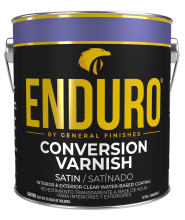 Enduro Water-Based Conversion Varnish
Enduro Water-Based Conversion Varnish
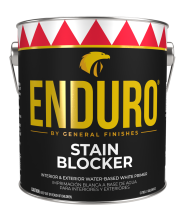 Enduro Water Based Stain Blocker Primer
Enduro Water Based Stain Blocker Primer
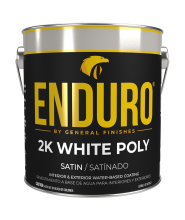 Enduro Water-Based Tintable 2K White Poly
Enduro Water-Based Tintable 2K White Poly
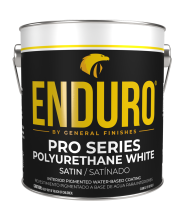 Enduro Water-Based Pro Series White Polyurethane
Enduro Water-Based Pro Series White Polyurethane
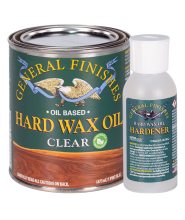 Hard Wax Oil & Hardener
Hard Wax Oil & Hardener
 Gel Stains
Gel Stains
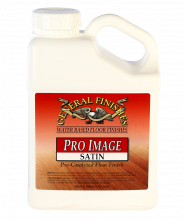 Pro Image Flooring Topcoat
Pro Image Flooring Topcoat
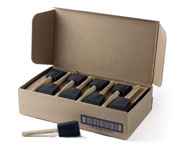 Jen Poly Brushes
Jen Poly Brushes
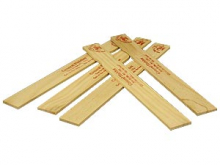 Stir Stix
Stir Stix
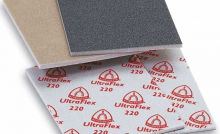 Ultraflex Softback Sanding Sponge
Ultraflex Softback Sanding Sponge

